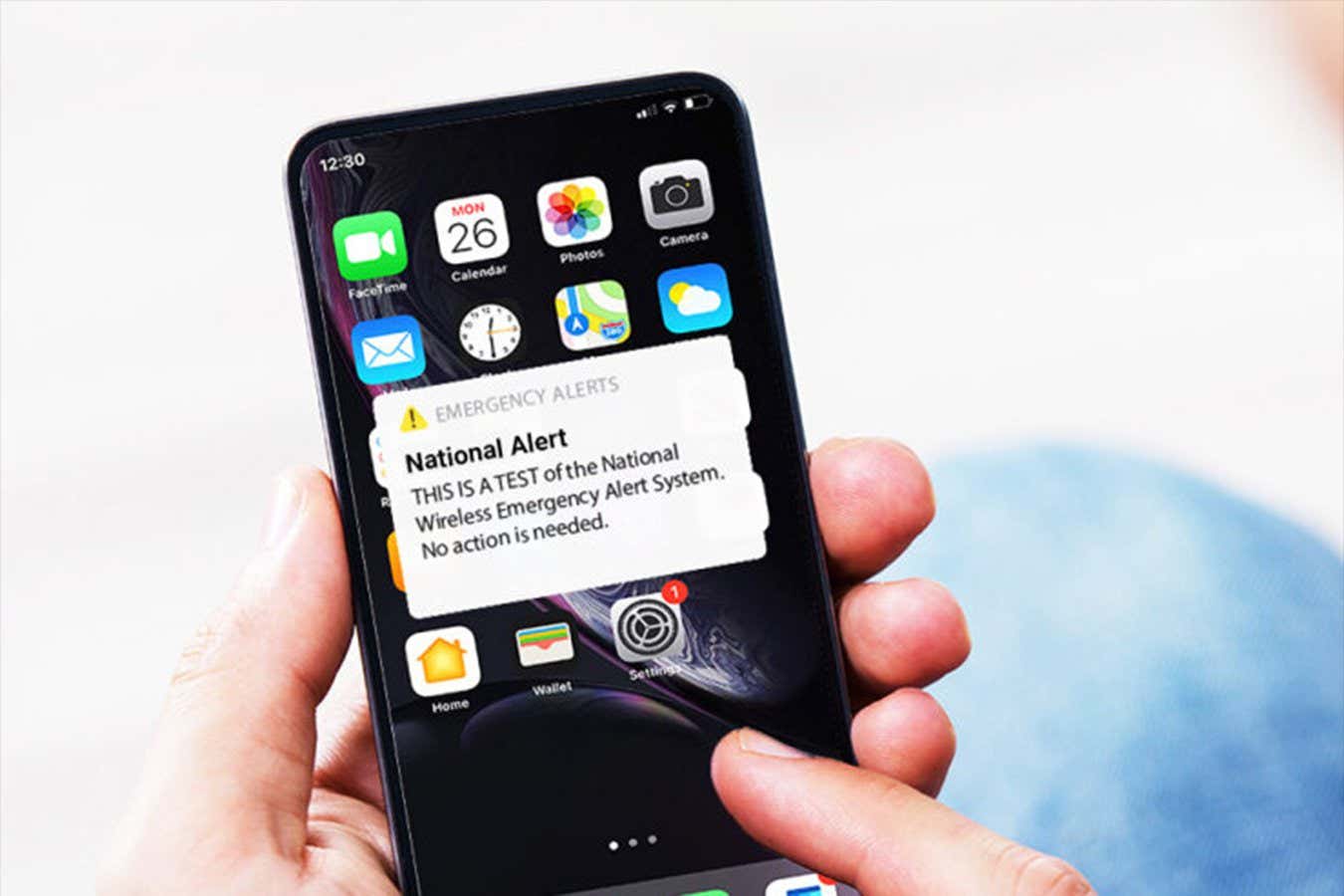Many people in the US will receive a message today as part of a test of an emergency system. Almost everyone in the US with a mobile phone, radio, or TV can expect to hear and see an alert message from the US government as part of a nationwide test – but there is no need for alarm or tinfoil hats.
The nationwide test of the Wireless Emergency Alerts system on 4 October will cause people’s mobile phones to vibrate and emit an audio tone, each action repeating twice, along with displaying a text message in either English or Spanish. The testing period is scheduled to start at 2:20 PM Eastern Time and to continue for 30 minutes.
The messages will read: “THIS IS A TEST of the National Wireless Emergency Alert System. No action is needed.”
Simultaneously, the US government plans to conduct a nationwide test of the separate Emergency Alert System that will broadcast similar one-minute messages through radio and TV.
Who is doing this test and why?
The US Federal Emergency Management Agency (FEMA) and Federal Communications Commission (FCC) are responsible for managing both systems and holding the national tests.
Real alerts are typically issued by local and state government officials, along with other federal agencies such as the National Weather Service, during actual emergencies. Most are local messages sent to specific counties or neighborhoods and include warnings of imminent threats such as extreme weather or active shooters, less urgent public safety messages, and AMBER Alerts in child abduction cases.
“The national test is best thought of as a system-wide test,” says Elizabeth Ellcessor at the University of Virginia. “If the system works for this, it should also work for the smaller, more local, ordinary uses.”
In the rarest emergencies, the system could send out a national alert issued by the president or by the head of FEMA.
How often do these tests take place?
This is only the third nationwide test of the Wireless Emergency Alerts system. Previous tests on mobile phones took place in 2018 and 2021, and additional tests are planned every few years in accordance with federal law.
Both earlier national tests attracted groundless conspiracy theories – and many people reported not understanding the different types of phone alerts or their uses after the nationwide test in 2021.
By comparison, Ellcessor describes the local alerts sent to phones for actual emergencies as typically not provoking any outcry “because people are more familiar with them and do see benefits firsthand”. Real phone alerts in the US have already been issued more than 84,000 times since the system first launched in 2012.
The US government might consider holding “an annual national or local testing day” so that people become familiar with the system through more frequent tests, says Hamilton Bean at the University of Colorado Denver. He points out that Canada already holds tests of its national Alert Ready system twice every year – and he recommends that the US make more effort to educate people about its own system.
Can I opt out of getting the test message?
There is no official opt-out option for the national tests of the Wireless Emergency Alerts system on mobile phones. However, phones will not receive the test alert message if they are turned off or put in “airplane mode” for the duration of the test.
People may also fail to receive the message if they are beyond the range of cell tower signals during that time or are not using compatible phones. Some older mobile devices may also fail to display the text alert during a phone call.
Survivors of domestic violence who rely on hidden phones should consider turning off their devices for the duration of the national test, according to the National Network to End Domestic Violence, a non-profit organization based in Washington DC.








